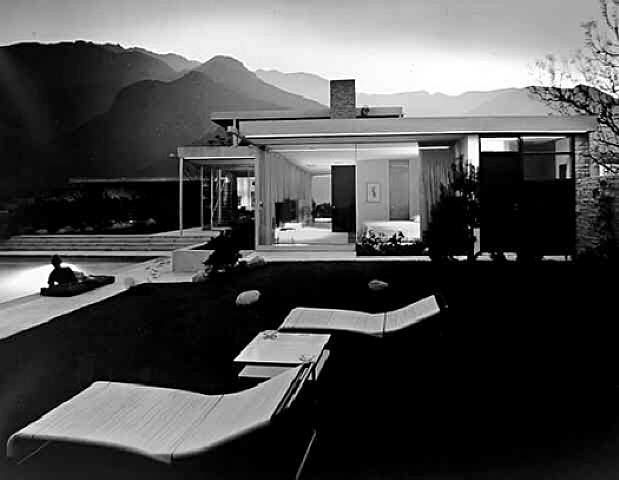The imaginary paradise of Julius Shulman
Visual Acoustics, an excellent documentary on the work of Julius Shulman, the brilliant photographer of modernist architecture who passed away last year, is now available on DVD.
Many people who think they love modernist architecture are really in love with the visual sensibility of Shulman, who took most of the defining pictures of early American modernism. This iconic shot of Koenig's Case Study House No. 22 turned a nice modernist house into something arresting, something that made the casual magazine browser pause and gape.
Shulman did it again and again, taking odd geometrical buildings made of strange materials and demonstrating how - in his mind's eye, at least - they cohered with the land and sky and invited habitation. His clients, mostly young architects trying to earn a living building to the new aesthetic, were surprised and delighted by the results. He was that rarest of all animals, an artist who could sell houses.
Of course part of Shulman's success was that he was not exactly photographing the structure, although he had a knack for capturing the angles and vanishing points that were hallmarks of the modernist style. But his interests went far beyond the building - sometimes further than the client would have liked.
Shulman worked with Neutra for 30 years, until the latter's passing in 1970. Shulman recalled that he was on site once at a Neutra project and moved to take his camera outside. Neutra tried to stop him, but Shulman prevailed. The result was:

If this has anything to do with architecture, I'm Justin Bieber.
Shulman was meticulous with light and composition, and managed, within the exceptional constraints of the role he played, to evoke beautiful imaginary lives, lives untroubled by traffic, neurosis, or discord. Some say he sold modernism to America, but it would be more correct to say that in his commercial photography he persuaded America to see things his way - a "floating world" (to use the Japanese term) that was harmonious, perfectable, and, best of all, well-lit.
Perhaps he was such a spectacularly successful marketer because his aesthetic emphasized things most modernist architects hardly cared about. Some of these guys really believed "form follows function" and "a house is a machine for living in," even as they aped the aesthetics of the Greeks and Japanese (a dynamic that came full circle with Wright's magnificent Imperial Hotel in Tokyo).
While I would argue his commercial success had a nice parallelism with his sincere artistic intentions, he could take other kinds of pictures too. Some hint at his concern for the environment, others signal his deeply-held conviction that L.A. was turning into something other than a modernist fairy-land:

I never heard Shulman exactly say it in the documentary but I'll say it here: he was a mysticist. Yes! A damned mysticist. These pictures are full of stuff that's not in them. He put his own heart and mind into these photographs, and in doing so he made modernism something good and special and human, something it never really was.
There is an excellent Atlantic piece on Shulman here. There is also a brief mini-documentary, narrated by Shulman himself, on Youtube. You can also get Visual Acoustics on Netflix.


0 Comments:
Post a Comment
<< Home